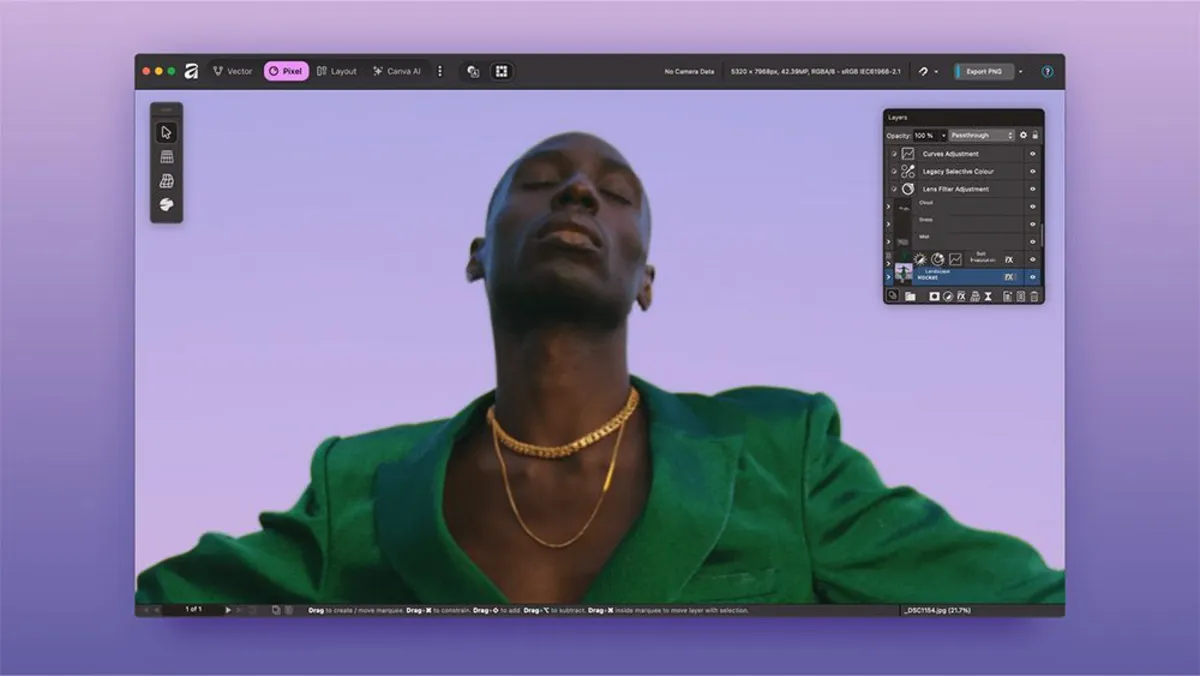
This week, Canva surprised the design community by making the Adobe alternative Affinity free for all users, sparking excitement among artists and designers. While many are celebrating the arrival of a new free Photoshop alternative, others remain cautious and question what the catch might be.
The newly launched Affinity app consolidates the core tools and features from the previously separate applications: Affinity Photo, Affinity Designer, and Affinity Publisher. Collectively, these three applications used to cost as much as $70 each. Now, users can access a comprehensive suite that combines pixel, vector, and layout tools—all within a single, free desktop app. The question on everyone's mind is: has Christmas come early for creatives, or is this too good to be true?
Last year, Canva acquired Affinity's developer, Serif, but it wasn't until October that any significant changes were made. The Affinity website halted sales, leading to widespread speculation about future developments. With the recent relaunch of Affinity as a free app, many users are expressing their enthusiasm. One user even commented on our Facebook post, calling it "the best news creatives have had for years."
Many users are astounded by the capabilities now available in free software. One user stated, “I now use Affinity as a Photoshop, Illustrator, and InDesign alternative, along with ComfyUI and Krita for generative AI. Free tools like DaVinci Resolve for video editing, Darktable as a Lightroom alternative, and Blender for 3D modeling make it unreal that these design tools are free.”
However, not everyone is celebrating. There is a natural skepticism towards large corporations, leading some to question what Canva's true motives are for offering the new Affinity app for free. Speculations include the potential for in-app advertising, using the app to train AI (a claim that Canva denies), or even an attempt to undermine Adobe's dominance in the market. One user speculated, “Their objective was to undermine Adobe, not provide for paying customers. Revenge instead of progress.”
Some users worry that Affinity’s tools will stagnate, lacking the regular updates necessary for a professional design environment. “If you depend on software for your design work, it needs to be regularly updated. Free software often lacks that pressure,” remarked one concerned user. Others predict a future shift towards mandatory subscriptions, suggesting that the free version may eventually lead to paid tiers for advanced features.
Interestingly, the new Affinity app does not currently feature its own generative AI tools, although Canva has recently launched a Creative Operating System powered by a unique AI model designed specifically for design. Premium Canva subscribers will gain access to AI tools like Generative Fill directly within the Affinity app. This strategy appears to position Affinity as a loss leader, aimed at expanding Canva's market share while enticing some users to opt for a subscription to access enhanced AI features.
For many professionals, the absence of AI features in Affinity is a dealbreaker. One user expressed, “In the professional world, AI features are a necessity. That turns Affinity into a subscription service. That's not how you get Adobe customers to switch!” Conversely, some users appreciate Canva's approach to AI, allowing those who want AI tools to pay for them while letting others use the app for free. However, critics of AI point out a moral contradiction in utilizing an app subsidized by AI technology.
The conversation has even taken a philosophical turn regarding the definition of 'free.' Is signing up for a Canva account and providing personal information a form of payment? As someone who was initially skeptical, I have been using the new Affinity app for a day and found my first impressions largely positive. The app functions smoothly, and I have successfully accessed essential tools like masks, adjustment layers, and retouching options.
While Affinity offers a solid alternative for tasks typically handled by Photoshop, it does have limitations. Users who rely on Adobe's Creative Cloud will likely continue to stick with Adobe for features like Firefly AI tools and the assurance of regular updates. Adobe recently announced the launch of an AI assistant in Photoshop and personalized AI image generators for brands and artists. Additionally, users requiring tools for video editing and motion graphics will find Adobe's Premiere and After Effects indispensable. However, for those focused on still graphics who prefer to avoid AI, Affinity may be all they need.